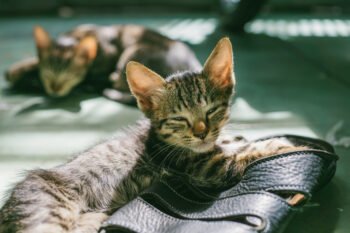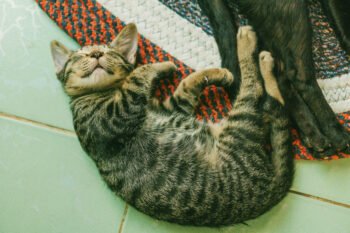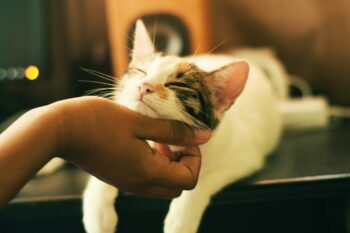As long as my cat is eating, her teeth and gums must be healthy, right?
Not really. In the last decade or so, the importance of routine feline dental care has become clear, as cat owners become aware that proper tooth and gum care is not only essential to kitty’s overall comfort, but could actually save her life!
According to the American Veterinary Dental Society (AVDS), 70 percent of cats show signs of tooth and gum disease by age three. And oral disease is the most common health problem treated in small animal clinics today. You can help prevent painful mouth problems by making sure kitty gets proper home and veterinary dental care throughout her lifetime.
What happens if you don’t? Like humans, cats can develop gum diseases such as gingivitis and periodontal disease. Plaque and tartar can build up on your cat’s teeth, creating a haven for the bacteria that cause these gum diseases. Symptoms of periodontal disease in cats include yellow and brown tartar buildup along the gum line; red, inflamed gums; and persistent bad breath. Untreated periodontal disease can lead to sore and loose teeth. It can also cause sores and lesions inside the mouth. Unfortunately, bacteria from gum diseases can enter kitty’s bloodstream and travel to major organs such as the heart, lungs, liver, and kidneys. If such infections are not treated in time, they can be fatal to your cat.
Can cats get cavities? It’s not common (because cats eat a low-carbohydrate and low-sugar diet), but it can happen. And, as you probably already know, cavities are very painful if they’re not treated. Teeth can break and get chipped, too, usually when kitty chews something she shouldn’t or gets into a fight.
So if you aren’t already caring for your feline’s fangs, start the process today. Take kitty to the veterinarian for a dental check-up and professional cleaning and learn how to care for her teeth at home, as well. Unfortunately, pets cannot tell you if they have a toothache or sore gums, so it’s up to you to prevent, recognize, and treat agonizing oral distress.







